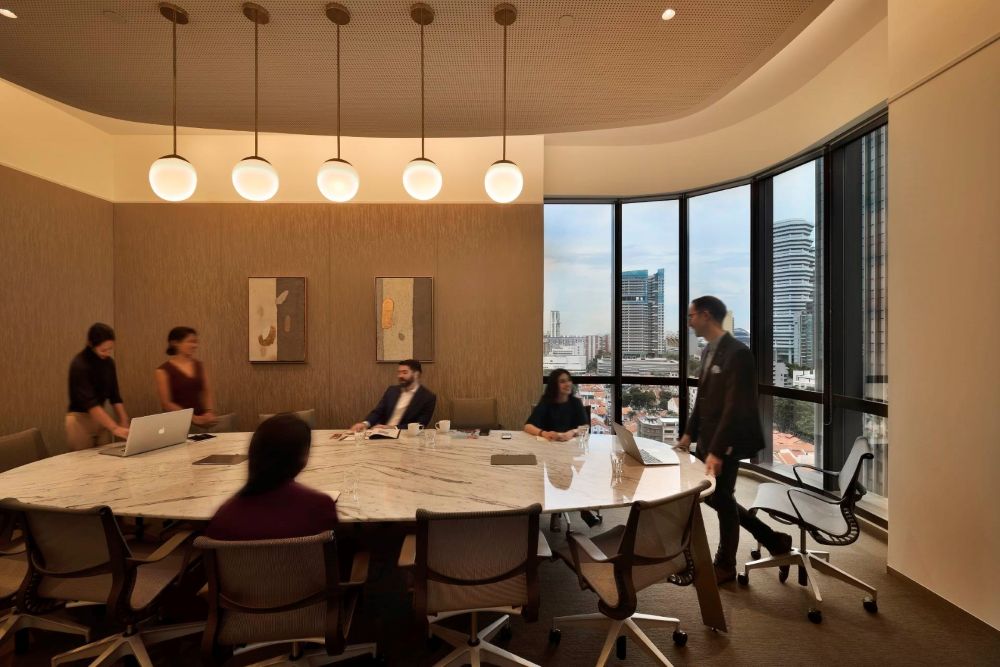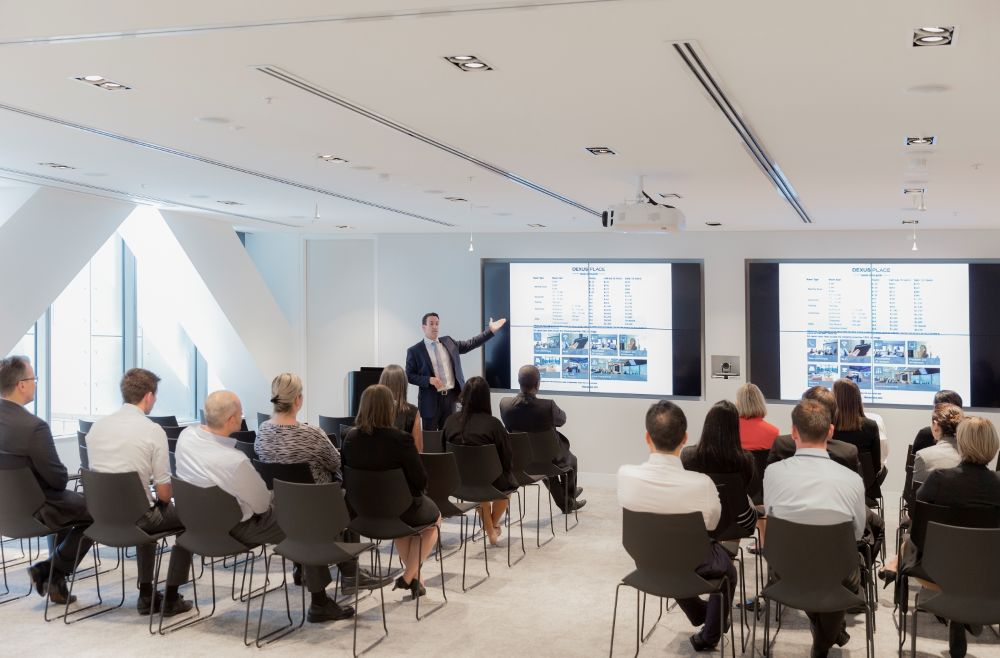Collaboration spaces have become increasingly prevalent in modern workplaces, recognised for their potential to enhance teamwork, creativity, and innovation. But what exactly defines a collaboration space, and why are they increasingly essential for offices in Australia?
In this blog, we will explore the nature of collaboration spaces, their practical benefits for businesses, and offer guidance on integrating collaborative practices into your organisation.
Defining Collaboration Spaces
A collaboration space is a designated area within an office specifically designed to facilitate interaction, communication and build teamwork. It's a space where individuals can come together to brainstorm ideas, solve problems, and share knowledge in a comfortable and stimulating environment. These spaces differ from traditional meeting rooms or private offices, which are often associated with formal interactions and hierarchical structures. Collaboration spaces break down these barriers, encouraging a more fluid and inclusive approach to work.
The Power of Collaboration: Why Offices Need These Spaces
In today's fast-paced business environment, collaboration is key to success. Traditional office layouts, with their emphasis on individual workspaces and silos, can hinder communication and stifle creativity. Collaboration spaces provide a much-needed solution, offering a range of benefits:
- Enhanced Communication and Teamwork: Open-plan layouts and flexible seating arrangements in collaboration spaces promote spontaneous interactions and facilitate the flow of information. This empowers teams to work more effectively, find solutions faster, and build stronger working relationships.
- Increased Productivity: Collaboration spaces provide employees with the tools and environment they need to collaborate efficiently. From whiteboards and interactive displays to comfortable seating and ample natural light, these spaces are designed to spark creativity and boost productivity.
- Improved Employee Engagement: Collaboration spaces foster a sense of community, encouraging employees to share ideas, learn from each other, and celebrate successes together.
- Driving Innovation: By bringing together individuals with diverse perspectives and skillsets, collaboration spaces create the ideal environment for innovation. The free flow of ideas and the ability to bounce ideas off each other.
Types of Collaboration Spaces

A brightly lit, modern office and meeting space with several rows of workstations.
Collaboration spaces come in various forms, each designed to support different types of interactions and activities:
- Informal Spaces: Lounges, breakout areas, or cafés provide relaxed settings for spontaneous conversations, informal meetings, and casual brainstorming sessions. These spaces encourage social interaction and the organic exchange of ideas.
- Meeting Rooms: Dedicated spaces equipped with technology for presentations and video conferencing, meeting rooms cater to formal gatherings, client presentations, and structured team discussions.
- Creative Spaces: Designed to spark innovation and idea generation, creative spaces often include whiteboards, brainstorming tools, and comfortable, flexible seating arrangements.
Key Features of Effective Collaboration Spaces
To maximise their potential, collaboration spaces should be designed with specific features in mind:
- Adaptable Layouts and Furniture: Flexibility is key. The ability to reconfigure the space to accommodate various group sizes and activities ensures the space can adapt to evolving needs. Mobile furniture, modular seating, and adjustable tables allow for effortless transformations, supporting both intimate discussions and larger team gatherings.
- Technology Integration: Seamless collaboration, whether in-person or virtual, relies on robust technology. High-speed Wi-Fi, video conferencing equipment, and interactive displays are essential for connecting teams and facilitating dynamic presentations and discussions.
- Visual Collaboration Tools: Whiteboards, flipcharts, and other visual aids provide a tangible canvas for brainstorming, note-taking, and idea visualisation. These tools encourage active participation and help teams capture and develop their thoughts in a collaborative manner.
- Comfort and Ambiance: A positive and inviting atmosphere is vital for productive collaboration. Comfortable seating, good acoustics to minimise distractions, and ample natural light all contribute to a space where individuals feel at ease and motivated to engage.
Integrating Collaboration Spaces into Your Office Design
- Identify Needs: Begin by understanding your team's collaboration needs and workflow patterns. Determine what types of collaborative activities are most common, such as brainstorming sessions, client presentations, or team meetings.
- Space Allocation: Dedicate sufficient space for collaboration areas, considering the size of your team and the types of activities that will occur in these spaces. Ensure a balance between collaborative zones and individual workspaces to cater to varying needs.
- Design Considerations: Pay attention to aesthetics, lighting, acoustics, and furniture choices to create an environment that is both functional and inviting. A well-designed collaboration space fosters creativity, engagement, and a sense of comfort.
- Technology Integration: Equip the space with modern and smart technology to support collaboration seamlessly, whether team members are in the same room or working remotely. High-quality video conferencing, digital whiteboards, and cloud-based file-sharing tools are essential.
- Incorporate Natural Light and Greenery: Natural light has a proven positive impact on mood, productivity, and overall well-being. Whenever possible, design collaboration spaces with access to natural light. Additionally, incorporate plants and greenery to create a more inviting and calming atmosphere.
The Work Project: Your Partner in Collaboration
Collaboration spaces are more than just a design trend; they are essential tools for fostering productivity, innovation, and employee satisfaction in the modern workplace.
At The Work Project, we understand the power of collaboration and its impact on business success. Our premium coworking spaces in Australia are designed to facilitate connection, creativity, and innovation. We offer a variety of collaboration spaces tailored to meet the diverse needs of modern professionals and businesses. From sleek meeting rooms and informal breakout areas to project rooms and creative brainstorming spaces, our flexible environments encourage teamwork and inspire productivity.
Explore our coworking spaces today and discover how our thoughtfully designed spaces can support your team's success. Contact us to schedule a tour or learn more about our flexible workspace solutions, including private office rental and hot desk rental options. Your ideal coworking space awaits.






